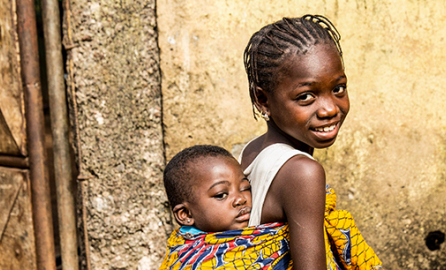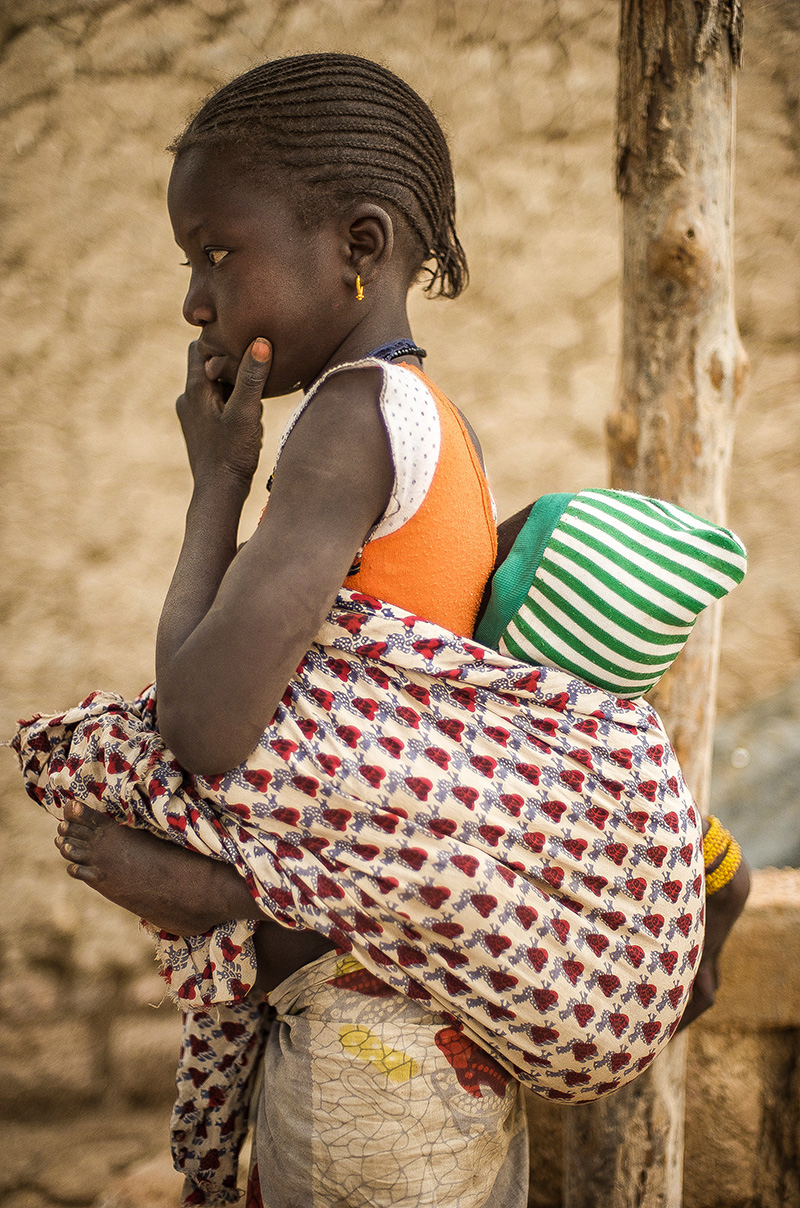While Guinea has made progress on gender equality, traditional norms have remained a barrier to women’s ability to express themselves. Establishing gender as a prerequisite to development in political dialogue could help move the agenda forward.
Located in West Africa, Guinea has one of the highest rates of female genital mutilation (FGM) in the world, behind only Somalia. According to UNICEF, 97 percent of Guinean women and girls aged 15 to 49 have undergone the procedure.

97 percent of Guinean women and girls aged 15 to 49 have undergone female genital mutilation. Photo © UNICEF Guinea
But FGM isn’t the only problem women face in the country.
Many encounter difficulties in earning a fair wage – they often work in the informal sector and face some of the lowest levels of labour force participation and economic opportunities in the world.
Another challenge lies in the legal structure of the country. The country has three types of law – customary, religious and statutory – which undermine the respect for women’s rights.
Moreover, when laws to protect women’s rights are in place (such as the criminalisation of violence), they are often poorly applied, meaning that women have no recourse when their rights are violated.
“There are enormous amounts of challenges,” said François Tolno, programme officer and the Gender Focal Person at the EU Delegation to the country.
While the Government and development partners have been making efforts to address these challenges – including introducing a National Policy on Gender in 2011 – discrimination against women remains a reality for many.
The EU Gender Action Plan 2016-2020 (GAP II) has given the Delegation a framework to act on to begin taking the next steps.
What is the GAP II?
The EU Gender Action Plan 2 (GAP II) provides the framework for the European Commission, the European External Action Services and the EU Member States in their approach to gender equality through external action.
Its implementation is mandatory for all external relations of the EU and an implementation report of the GAP II is produced every year to monitor the achieved progress.
The GAP II has four thematic priorities:
Ensuring girls’ and women’s physical and psychological integrity (6 sub-objectives)
Promoting the economic and social rights / empowerment of girls and women (4 sub-objectives)
Strengthening girls’ and women’s voice and participation (4 sub-objectives)
Shifting the Commission services’ and the EEAS’ institutional culture to more effectively deliver on EU commitments.
Developing a plan of action on gender
“The GAP II training last year was really useful,” said Tolno, referring to a DEVCO seminar for Gender Focal Points organised in Brussels.
“I went back to the Delegation and explained the outcomes, which were positively received – and we ended up developing an action plan.”
François Tolno on the GAP’s impact on the work of the EU Delegation (in French, with English subtitles):
Today, all of the Delegation’s programmes take into account gender equality, from budget support for health to programmes on security, justice and sanitation.
“Any action that we do is never neutral – so we always need to focus on creating equity in our interventions,” said Tolno.
While gender was included in a previous analysis conducted by the Delegation, he added, the theme now forms an integral and transversal part of their work.
This approach in the Delegation’s programme on security – particularly on the socio-economic reintegration component – has borne notable results, explained Tolno. Out of 2,000 individuals targeted, 1,400 were women, who were assisted in setting up revenue-generating activities.
Gender now forms an integral and transversal part of the EU Delegation's work in Guinea. Photo © Julien Harneis
“These were often women who lived in vulnerability – widows, women affected by Ebola,” Tolno said. “The programme has allowed them to be autonomous.”
Sensitising government authorities
“In the implementation of strategic plans, not everything is always rosy,” said Tolno. “We still need to sensitise governmental authorities.”
On the issue of female genital mutilation, this has meant conveying the information to the government authorities by framing it in the context of human rights.
Including gender in the process of political dialogue – especially on subjects like budget support – has been particularly helpful, Tolno added.
“When we talk to technicians and to the Government, we pass the message,” he said.
“We ask that they provide us with sex disaggregated data, and we point out that promoting and including gender equality in policy and programmes is not a luxury or an option, but an obligation and a key factor if we want development activities and cooperation to work.”
Additional resources:
Joint Staff Working Document "Gender Equality and Women's Empowerment: Transforming the Lives of Girls and Women through EU External Relations 2016-2020 (GAP II)"
Capacity4dev Public Group on Gender
DEVCO Academy Gender Page
Sustainable Development Goal 5 "Achieve gender equality and empower all women and girls"
This article was written by Craig Hill.




(1)
Log in with your EU Login account to post or comment on the platform.
By promoting girls' education , girls will have the right to realize their human potential, they will be able to stand for thier right, freely exercise them and contribute to society by promoting economic, social and political development, thereby reducing inequalities. Educated girls will be able to train the next generation of women leaders and make revolutionary progress for the continent's development